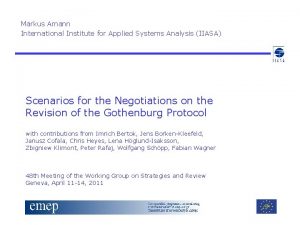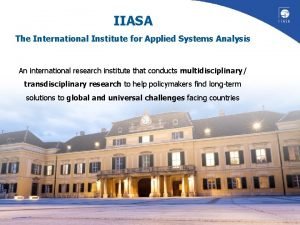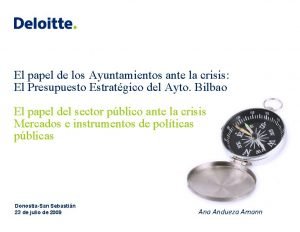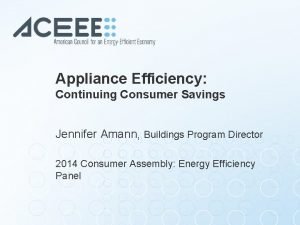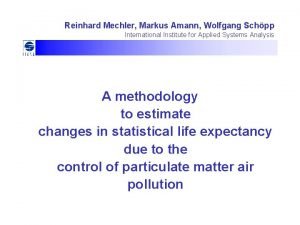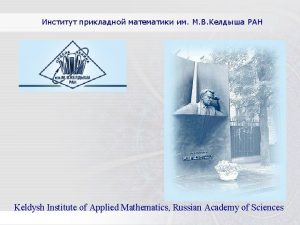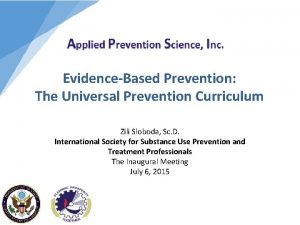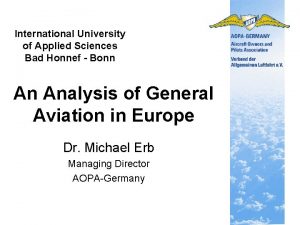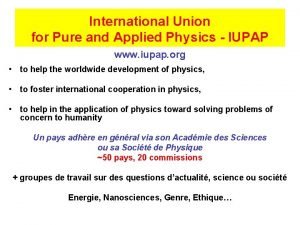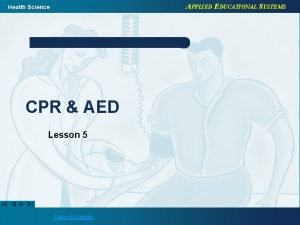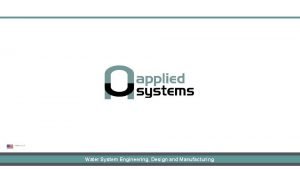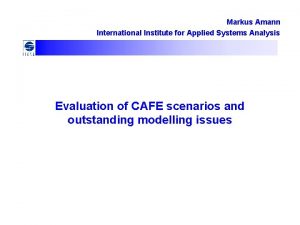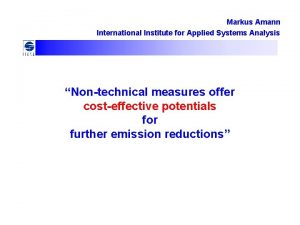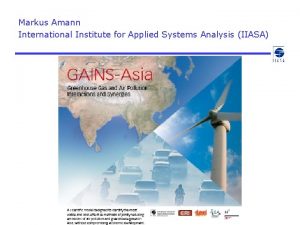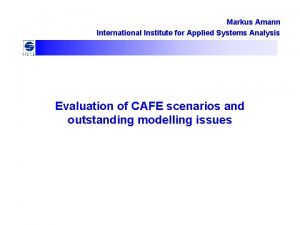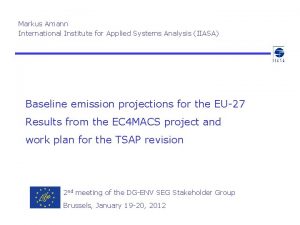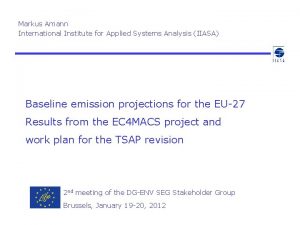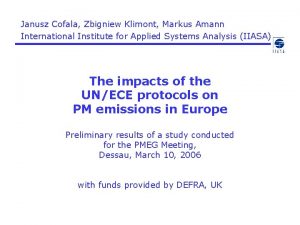Markus Amann International Institute for Applied Systems Analysis










![Optimized emission reductions for EU-25 of the D 23 scenarios [2000=100%] Optimized emission reductions for EU-25 of the D 23 scenarios [2000=100%]](https://slidetodoc.com/presentation_image_h2/efe59d77c839bd547f978084cddc878c/image-11.jpg)

- Slides: 12

Markus Amann International Institute for Applied Systems Analysis Methodologies for an effect-based approach

From the Working Group on Strategies and Review EB. AIR/WG. 5/80

Definition of the effect-based approach • “All proposed measures need to be justified by actual environmental improvements at least costs” • Leads to substantial cost-savings compared to traditional (source-based) approaches

The effects-based approach Decision makers: • Determine targets for environmental improvement, choose – Impact indicator (gains in life expectancy, ecosystems area where critical loads are not exceeded, etc. ) – Distribution of environmental improvements across Europe (e. g. , uniform absolute targets, uniform absolute improvements, uniform relative targets (gap closure), progressive improvements, etc. ; This includes the definition of gap. • Identify with RAINS the cost-minimal set of emission controls • Analyze distribution of costs and benefits

Gap closure approach for CAFE WGTSPA explored suitability of alternative target setting principles (CAFE scenarios A and B). Criteria were equity and efficiency: • No clear evidence for threshold for health impacts from PM and O 3 • Uniform absolute targets (e. g. , AQ limit values) result in uneven distribution of burdens and inefficient use of resources. • Also the traditional “gap closure” approach (gap defined as difference between environmental situation in base year and the noeffect indicator (e. g. , critical loads, 0/7 μg/m 3 for PM 2. 5)) does not trigger general improvements throughout the EU

Option 1 for PM target: Absolute limit on PM concentrations [Country-average PM 2. 5, μg/m 3] 18 16 14 12 10 8 6 4 Residual Baseline > MTFR NEC > Baseline UK Sweden Spain Slovenia Slovakia Portugal Poland Netherlands Malta Lithuania Latvia Italy Luxembourg PM Ireland Hungary Greece Germany France Finland Estonia Denmark Czech Rep. Cyprus Belgium 0 Austria 2 Lowest possible target

Option 2: Gap closure between base year and no-effect Uniform % improvement of PM effects in relation to 2000 [100% = 2000] 100% 90% 80% 70% 60% 50% 40% 30% 20% Residual Baseline > MTFR 2000 > Baseline Max. gap closure UK Sweden Spain Slovenia Slovakia Portugal Poland Netherlands Malta Lithuania Latvia Italy Luxembourg PM Ireland Hungary Greece Germany France Finland Estonia Denmark Czech Rep. Cyprus Belgium 0% Austria 10%

CAFE definition of gap closure Effect indicator Base year exposure (2000/1990) Gap concept used for NEC 2010 Baseline 2020 (Current legislation) GAP definition used for CAFE MTFR from EU 25 excluding EURO 5/6 MTFR from EU 25 MTFR from all Europe MTFR all Europe + shipping No-effect level (critical load/level) Zero exposure

Definition of “gap” in CAFE As a policy choice, the CAFE-WGTSPA decided for a gap as the difference in environmental impact indicators between • The situation projected for the baseline 2020, and • The situation resulting from the maximum technically feasible reductions (MTFR). Advantages: • All countries can improve between 0% and 100% on this scale. • Comparable gap closure percentages result in comparable marginal costs. Disadvantage: • Quantification of both endpoints (baseline projection in 2020 and MTFR) are arbitrary and could be modified for strategic reasons.

Environmental improvements of the CAFE scenario Impact indicator in 2000 = 100%
![Optimized emission reductions for EU25 of the D 23 scenarios 2000100 Optimized emission reductions for EU-25 of the D 23 scenarios [2000=100%]](https://slidetodoc.com/presentation_image_h2/efe59d77c839bd547f978084cddc878c/image-11.jpg)
Optimized emission reductions for EU-25 of the D 23 scenarios [2000=100%]

Conclusions • An effect-based approach relates proposed emission reductions with actual environmental improvements. • Offers large potential for cost-savings. • The appropriate scale for the quantification of impacts is a genuine policy choice. • For CAFE, scaling the gap between 2000 and no-effect levels was found not useful as a starting point for negotiations: – No evidence for no-effect thresholds for health impacts – Little scope for relative improvements in (clean) countries at the margin of the EU (Cyprus, Finland) would stop possible measures at highly polluted places. • As a pragmatic approach, CAFE scaled the gap between the impact indicators calculated for Baseline 2020 and MTFR.
 Markus amann
Markus amann International institute for applied system analysis
International institute for applied system analysis Ana andueza amann
Ana andueza amann Jennifer amann
Jennifer amann Schpp
Schpp Elearning adveti
Elearning adveti Keldysh institute of applied mathematics
Keldysh institute of applied mathematics Applied prevention science international
Applied prevention science international International university of applied sciences bad honnef
International university of applied sciences bad honnef Iupap
Iupap Ed kennedy characterization
Ed kennedy characterization Applied education systems
Applied education systems Applied systems inc subsidiaries
Applied systems inc subsidiaries
